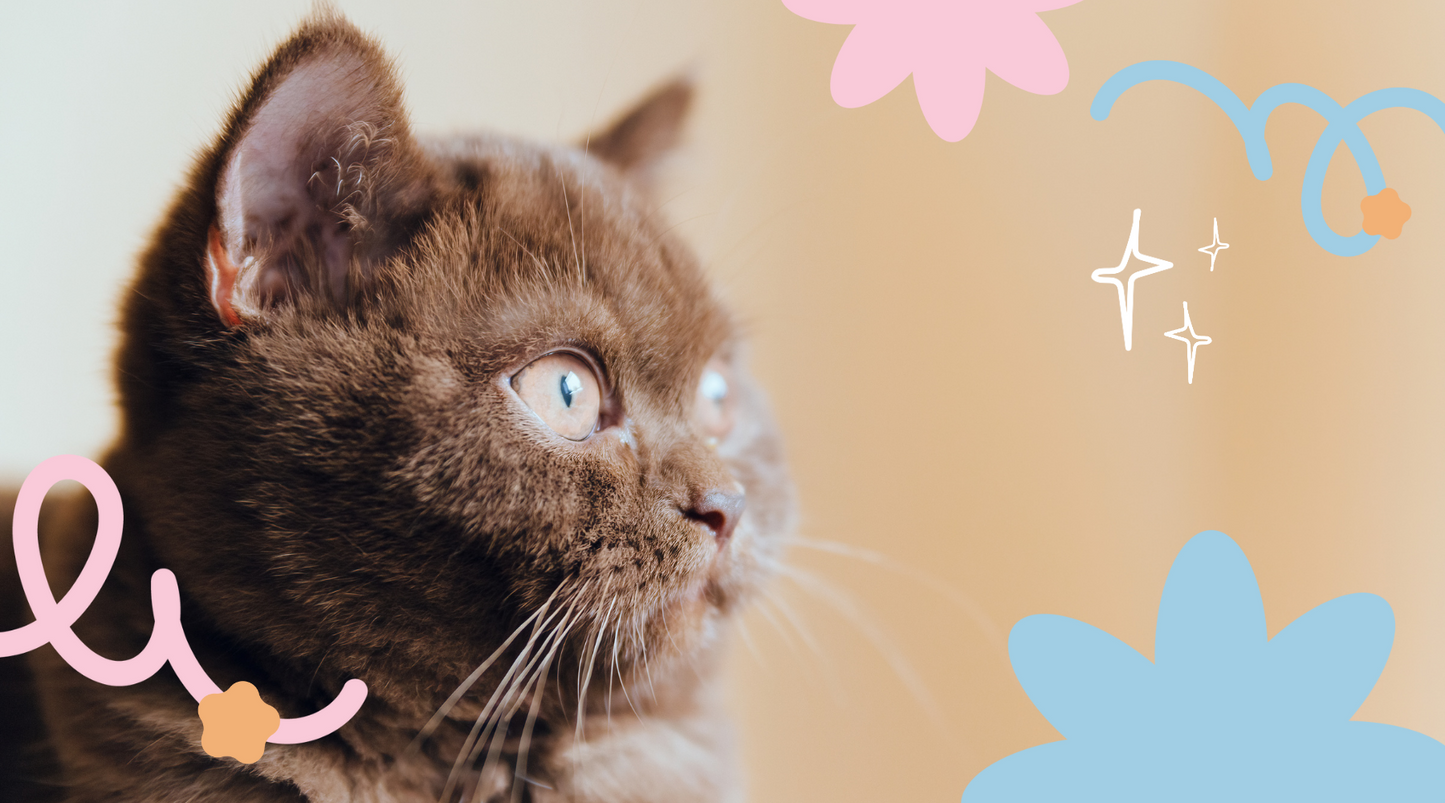
The British Shorthair cat breed is one of the most iconic and beloved breeds in the world. With its round eyes, dense coat, and affectionate nature, it's no wonder these cats have captured the hearts of many. This article delves deep into the history, characteristics, and care tips for British Shorthairs, offering a comprehensive guide for enthusiasts and potential cat owners alike. Read on to discover the charm and allure of this ancient breed.
What is the British Shorthair Breed?

The British Shorthair is a breed of domestic cat that originated in the British Isles. Known for its dense coat, round eyes, and sturdy physique, this breed is one of the oldest recognized cat breeds in the world. The British Shorthair cat breed is a version of the traditional British domestic cat, with a distinct appearance and plush coat color.
The Appearance of the British Shorthair Cat: What Makes Them Unique?

British Shorthairs are known for their round eyes, dense coat, and muscular build. They come in different colors and patterns, with the blue British Shorthairs being the most popular. Their coat is plush, making them a delight to pet. The cat appearance is further accentuated by their broad face and short nose.
A Glimpse into the History of British Shorthairs

The British Shorthair breed has a rich history that dates back to the ancient times in the British Isles. They were initially working cats, helping to keep rodent populations in check. The breed gained popularity in 1871 during the first cat show at the Crystal Palace in London. Harrison Weir, often referred to as the "father of the cat fancy," played a significant role in promoting the breed.
How to Groom Your British Shorthair?

While British Shorthairs have a dense coat, they are relatively easy to groom. Regular brushing helps remove loose hairs and prevents matting. It's also essential to check British Shorthair's ears, eyes, and teeth regularly to ensure they remain healthy.
Understanding the Health of British Shorthair Cats

British Shorthairs are generally healthy cats, but they can be prone to certain health concerns like hypertrophic cardiomyopathy and polycystic kidney disease. Regular veterinary check-ups are crucial to ensure the cat's health and well-being.
British Blue: A Popular Variant of the Breed

The British Blue, characterized by its blue coloration, is one of the most sought-after variants of the British Shorthair breed. Their striking appearance and gentle temperament make them a favorite among cat fanciers.
Choosing the Right Breeder for Your British Shorthair Kitten

When looking to adopt a British Shorthair kitten, it's essential to choose a reputable breeder. Breeders should provide breed information, health records, and ensure that the kittens are well-socialized.
At My Felidae, we only work with certified breeders, and provide transparent and detailed information about our kittens' lineage, medical history, and environment. Chat with us, and we'll be happy to help!
Is the British Shorthair an Outdoor Cat?

While British Shorthairs can adapt to outdoor living, they are best suited for indoor environments. If you decide to let your British Shorthair outside, ensure they have a safe and secure area to play in.
Tips for Caring for British Shorthairs

1. Provide a balanced diet to prevent obesity.
To provide a balanced diet to your cat and prevent obesity, consider the following:
- Consult a veterinarian: It is important to seek professional advice to determine the appropriate amount of food and serving sizes for your cat's specific needs.
- Measure portion sizes: Read the feeding instructions on the cat food packaging and use a measuring cup to serve the appropriate amount. Avoid overfeeding.
- Choose high-quality cat food: Look for a well-balanced cat food that provides the necessary nutrients. Consider brands that have a quality protein source as the main ingredient and avoid those with fillers or excessive carbohydrates.
- Monitor calorie intake: Many cat food packages will provide guidelines for the recommended daily calorie intake based on the cat's weight. Adjust the portion size accordingly to prevent excessive calorie consumption.
- Avoid excessive treats: Treats should be given in moderation as they can contribute to weight gain. Opt for low-calorie treats or even use portions of your cat's regular food as an occasional treat.
- Encourage exercise: Engage your cat in regular play sessions to keep them active and burn calories. Use interactive toys or games that encourage movement.
Remember, a balanced diet and portion control are essential in preventing obesity in cats.
2. Offer cat trees and toys for stimulation.
Cat trees and toys are essential for providing a stimulating environment for cats. Here are some reasons why they are important:
- Exercise: Cat trees offer various levels and platforms for cats to climb, jump, and explore. This helps them exercise their muscles, maintain their agility, and burn off excess energy.
- Scratching outlet: Cat trees often come with built-in scratching posts, which provide cats with a designated place to scratch and stretch their claws. This helps keep their claws healthy and prevents them from damaging furniture or other household items.
- Vertical space: Cats are natural climbers and feel secure when they have vertical space. Cat trees provide elevated platforms where they can observe their surroundings from a safe vantage point, which satisfies their instinct to be up high.
- Mental stimulation: Providing different levels, hideaways, and perches on a cat tree can stimulate a cat's curiosity and encourage mental engagement. It offers them opportunities to explore, hunt imaginary prey, and simply have fun.
- Privacy and personal space: Cat trees often have cozy hideaways or enclosed spaces where cats can retreat to when they want some alone time or a quiet spot to relax. These private spaces give them a sense of security and ownership in their environment.
- Entertainment: Toys are essential for keeping cats entertained, especially when they are alone. Interactive toys, such as puzzle toys or treat-dispensing toys, can engage their hunting instincts and provide mental stimulation.
When choosing cat trees and toys, it's important to consider your cat's preferences and needs. Look for sturdy and well-made cat trees with various levels, scratching surfaces, and hiding spots. Opt for toys that are safe, durable, and can keep your cat engaged for extended periods. Remember to rotate toys regularly to keep them interesting for your cat.
By providing cat trees and toys, you can create a stimulating and enriching environment that promotes physical and mental well-being in your feline companion.
3. Regularly groom and check for health issues.
Regular grooming is an essential part of taking care of a British Shorthair cat. Here are a few steps to follow:
- Brushing: British Shorthair cats have dense coats, so they benefit from regular brushing to remove loose fur and prevent matting. Use a grooming brush or a comb with wide teeth to gently brush their fur, paying extra attention to the areas behind the ears and under the belly.
- Bathing: While British Shorthairs usually keep themselves clean, occasional baths may be necessary, especially if they have gotten into something dirty or have a specific skin condition. Use a cat-specific shampoo and warm water. Be gentle and ensure that you thoroughly rinse off all the shampoo from their coat.
- Nail Trimming: Trim your cat's nails regularly to prevent them from becoming too long and causing discomfort or injury. Use a pair of cat nail clippers or human nail clippers with rounded edges. Be cautious not to cut into the quick, which can cause bleeding and pain.
- Dental Care: British Shorthairs are prone to dental issues, so it's important to regularly check their teeth and gums. Brushing their teeth with a pet-specific toothbrush and toothpaste can help prevent tartar buildup and oral diseases.
- Ear Cleaning: Check your cat's ears regularly for any signs of dirt, wax, or infection. Use a gentle ear-cleaning solution and a cotton ball or pad to wipe the outer areas of the ear. Make sure not to insert anything into the ear canal as it can cause damage.
- Eye Care: British Shorthairs have round eyes that may require extra attention. Check their eyes regularly for any discharge, redness, or irritation. If needed, gently wipe the corners of their eyes using a clean, damp cloth.
Apart from regular grooming, it is important to monitor your British Shorthair's health issues. Check for any signs of illness, such as changes in appetite, weight loss or gain, lethargy, vomiting, or diarrhea. Regular veterinary check-ups will help identify and address any health issues early on.
The British Shorthair in Pop Culture

The British Shorthair has made its mark in pop culture, most notably as the inspiration for the Cheshire Cat in Lewis Carroll's "Alice in Wonderland." Their charming looks and personality have made them a popular choice in movies, advertisements, and literature.
